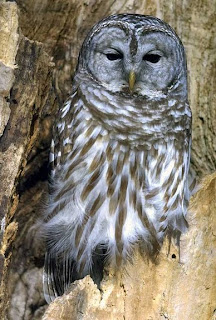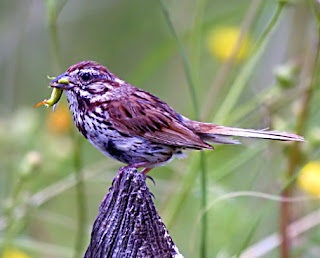Personal Behavior
Blue-winged Teal
1. Preening, arrangement, cleaning & general care of feathers. These are done with the bill, usually one feather at a time. Preening movements are usually stereotyped.
2. Head-scratching. This has been mentioned--some species are variable.
3. Bathing. Most bathe in water--House Sparrows bathe in dust. Wet birds can't fly efficiently so bird baths should be raised out of cats' reach.
4. Oiling after a bird is dry. They touch UROPYGIAL GLAND at base of tails. This waterproofs plumage and keeps feathers flexible, less likely to shatter.
5. Sunning. Birds often stretch out and ruffle feathers in sun. The exact function unknown--temp regulation? But done on cool days too!
6. Anting is another mystery. Some woodpeckers and many songbirds (Passeriformes) either passively let ants run or crush them into feathers. WHY? Secretions may discourage ectoparasites.
7. Comfort movements. These are stereotyped movements--fluffs, shakes, folds back feathers = feather settling; stretching; yawning; resting (with bill under scapulars).
8. Sleeping. Varies with and within species, some like resting but pigeons sleep with heads drawn in and bill forward.
Try Googling some of these terms (especially anting).




why do some waterbirds rest on one leg? aren't they more susceptible of toppling over while asleep?
ReplyDelete